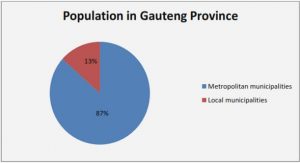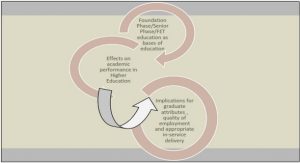Get Complete Project Material File(s) Now! »
The Twentieth century
The Union of South Africa was established on 31 May 1910 and all four colonies were united with the promulgation of a new prison act, namely the ‘Wet op gevangenissen en vebeteringgestichten », Act 13 of 1911. This act provided inter alia for the establishment of prisons but also for industrial schools and reformatories for children. Industrial schools and reformatories were reserved for emotionally difficult or « disturbed » children as well as for children with learning difficulties or those who have « low » intellectual or academic capabilities. However, the phenomenon of juveniles incarcerated with adult offenders in adult facilities remained a problem, despite South Africa’s ratification in 1955 of the United Nations’ Standard Minimum Rules for the Prevention of Crime and Treatment of Offenders (Erasmus, 1985:22; Venter, 1959:62). The new Prisons Act 8 of 1959 (as amplified by the Consolidated Prison Regulations) provided rules that governed all prisons, police cells and lock-ups. Few provisions were, however, made for juveniles. As a result little difference occurred in the treatment of adult and juvenile prisoners (Mclachlan, 1984:29). The new legislation extended racial segregation within prisons in line with the « differential development » apartheid policies of the apartheid regime and entrenched the militarization of prisons. The prison system was closed off from inspections by outsiders, which in turn served to enforce a closed institutional culture with little regard in practice of basic international standards or prescripts concerning norms of prison law (White Paper on Corrections, 2005:45).
IDENTITY DEVELOPMENT: A LIFE-LONG PROCESS OF REFLECTION AND OBSERVATION
Identity development can be described as a process of progressive differentiation and integration as the person grows older and becomes increasingly aware of significant others in his world. Interpersonal differentiation focuses therefore, on the emergence of an autonomous self. According to Erikson (1963:211) this is a life-long process which begins the moment the baby becomes aware of himself and his mother, as two different people. Identity development declines once this awareness of being separate diminishes. It is therefore, never completed, or entirely stagnant. During the process of identity formation, there is constant interaction between the child and his role models. The nature of introjection (e.g. the baby’s incorporation of the image of the mother) depends largely on the nature of the relationship between the mother and the child. A mutually satisfying relationship will provide the basis for the baby to identify successfully with other individuals in future developmental phases. Identification during childhood depends largely on the meaningfulness and reliability of the roles the parents provide the child with, and with which he can identify. When focusing on the dysfunctional nature of the families of most delinquents (see 2.5.1 ), one can expect that these children are not always exposed to positive role models. However, it needs to be noted that even though the identities of children from dysfunctional families will include some of these negative identifications, their identities will not be the sum total of the identity material provided by members of the family system. The child has to form his own unique identity. In order to form a unique identity, some identifications incorporated from others will be maintained and others will be rejected (Erikson, 1956:68).
1. GENERAL ORIENTATION AND PROBLEM FORMULATION
1.1 CONCEPTUALISATION
1.2 HISTORICAL PERSPECTIVE
1.3 LEGISLATIVE FRAMEWORK
1.4 MOTIVATION FOR AND PURPOSE OF THE RESEARCH
1.5 CONCLUSION
2. IDENTITY DEVELOPMENT: THEORETICAL AND EMPIRICAL PERSPECTIVE
2.1 IDENTITY DEVELOPMENT: A LIFE-LONG PROCESS OF REFLECTION AND OBSERVATION
2.2 IDENTITY DEVELOPMENT AS A SIMPLE OR COMPLEX PROCESS
2.3 IDENTITY CRISES
2.4 IDENTITY DEVELOPMENT ACCORDING TO THE EPIGENETIC PRINCIPLE
2.5 INFLUENCE OF SOCIAL DETERMINANTS ON IDENTITY DEVELOPMENT
2.6 CONCLUSION
3. EFFECTS OF IMPRISONMENT ON IDENTITY DEVELOPMENT
3.1 ARREST
3.2 PRISON CONDITIONS
3.3 PRISON VIOLENCE
3.4 PRISONIZATION AND INMATE CODE
3.5 PRISON GANGS
3.6 SEXUAL ASSAULT
3.7 STAFF PROBLEMS
3.8 TREATMENT PROGRAMMES IN PRISON
3.9 RELEASE
3.10 CONCLUSION
4. RESEARCH HYPOTHESES
5. RESEARCH DESIGN
5.1 METHODOLOGY
5.2 MEASURING INSTRUMENTS
5.3 PILOT STUDY
5.4 DATA COLLECTION
5.5 SAMPLING PROCEDURE
5.6 DESCRIPTION OF SAMPLE
5.7 STATISTICAL TECHNIQUES
5.8 CONCLUSION
6. ANALYSIS AND DISCUSSION OF DATA
6.1 IDENTITY DEVELOPMENT AND CULTURE
6.2 IDENTITY DEVELOPMENT AND DISCRIMINATION
6.3 IDENTITY DEVELOPMENT AND THE TYPE OF OFFENCE COMMITTED
6.4 RELATIONSHIP BETWEEN IDENTITY DEVELOPMENT AND FAMILY MEMBERS
6.5 RELATIONSHIP BETWEEN IDENTITY DEVELOPMENT AND FAMILY STRUCTURE
6.6 RELATIONSHIP BETWEEN IDENTITY DEVELOPMENT AND PEER FRIENDSHIPS
6.7 IDENTITY DEVELOPMENT AND OVERCROWDING CONDITIONS IN PRISON
6.8 IDENTITY DEVELOPMENT AND VICTIMISATION PRONENESS IN PRISON
6.9 IDENTITY DEVELOPMENT AND ADHERENCE TO THE INMATE CODE
6.10 IDENTITY DEVELOPMENT AND GANG MEMBERSHIP
6.11 IDENTITY DEVELOPMENT AND PARTICIPATION IN TREATMENT PROGRAMMES
6.12 CONCLUSION
7. RECOMMENDATIONS AND CONCLUSION
7.1 CONCLUSIONS PERTAINING TO THE REALISATION OF THE AIMS OF THE STUDY
7.2 RECOMMENDATIONS FOR FURTHER SCIENTIFIC ENQUIRY
7.3 CONCLUDING REMARKS






